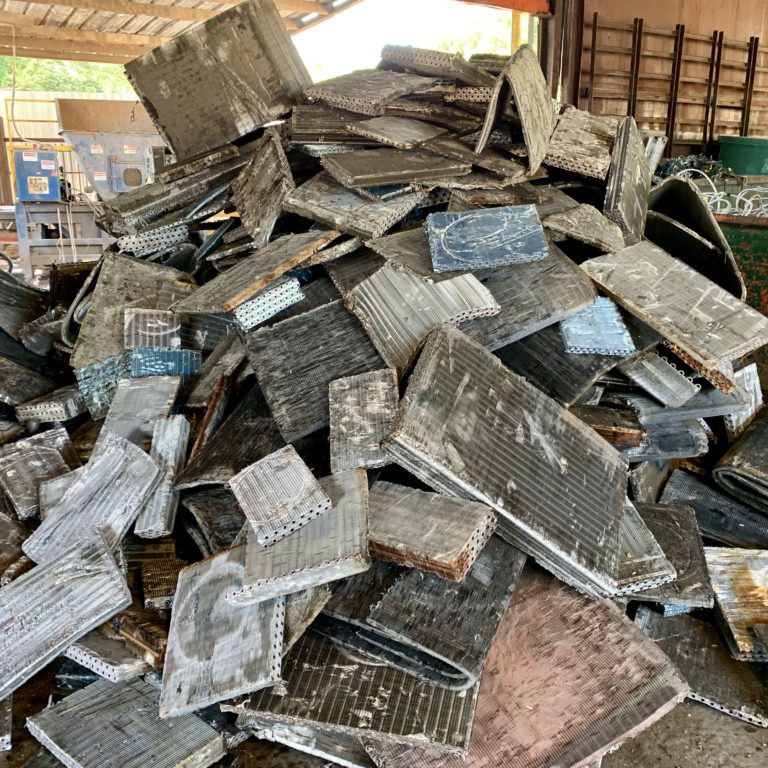Responsible E-Waste Management
Rare metals play a vital role in our modern lives, powering everything from smartphones and laptops to electric vehicles and renewable energy technologies. These metals, also known as “technology metals,” possess unique properties that make them essential for advanced electronics and green technologies.
However, the extraction and processing of rare metals can have significant environmental and social impacts. Recycling rare metals is crucial for minimizing these impacts, conserving resources, and ensuring a sustainable supply chain for these critical materials.
What are Rare Metals?
Rare metals encompass a group of elements with diverse properties and applications. Some of the most important rare metals include:
- Rare Earth Elements (REEs): A group of 17 elements with unique magnetic and luminescent properties used in magnets, batteries, and displays.
- Platinum Group Metals (PGMs): Six noble metals with high melting points and resistance to corrosion, used in catalytic converters, electronics, and jewelry.
- Lithium: A light alkali metal used in batteries for electric vehicles and portable electronics.
- Cobalt: A transition metal used in batteries, magnets, and high-performance alloys.
- Indium: A soft, silvery metal used in LCD screens and solar cells.
- Gallium: A low-melting metal used in semiconductors and LEDs.
- Tantalum: A hard, blue-gray metal used in capacitors and medical implants.
Why Recycle Rare Metals?
Recycling rare metals offers numerous benefits:
Resource Conservation. Rare metals are finite resources, and recycling helps to conserve these valuable materials for future generations.
Environmental Protection. Mining and processing rare metals can have significant environmental impacts, including habitat destruction, water pollution, and greenhouse gas emissions. Recycling reduces the need for new mining and its associated environmental footprint.
Reduced Reliance on Imports. Many countries rely heavily on imports for their rare metal supply. Recycling can help to reduce this dependence and create a more secure and sustainable domestic supply chain.
Economic Benefits. Recycling rare metals creates jobs and stimulates economic growth in the recycling and manufacturing sectors.
Identifying Rare Metals in E-Waste
Identifying rare metals in electronic waste (e-waste) can be challenging, as they are often embedded in complex components. However, some common sources of rare metals in e-waste include:
- Batteries: Lithium-ion batteries (found in smartphones, laptops, and electric vehicles) contain lithium, cobalt, and other rare metals.
- Magnets: Hard disk drives, speakers, and motors often contain magnets made with rare earth elements like neodymium and dysprosium.
- Circuit Boards: Circuit boards contain a variety of rare metals, including gold, silver, platinum, palladium, and tantalum.
- LCD Screens: LCD screens contain indium, a rare metal used in the transparent conductive layer.
- LED Lights: LED lights often contain gallium and indium.
How to Recycle Rare Metals
Recycling rare metals requires specialized processes and facilities. Here are some steps you can take to responsibly recycle your e-waste:
- Identify E-Waste Recyclers: Search for certified e-waste recyclers in your area. Look for recyclers who specialize in rare metal recovery.
- Prepare Your E-Waste: Remove any personal data from your devices before recycling.
- Separate Batteries: Remove batteries from your devices and recycle them separately, as they often require specialized recycling processes.
- Drop Off or Ship Your E-Waste: Take your e-waste to a local drop-off center or ship it to a certified recycler.
Rare Metal Recycling FAQ
Q: Can I recycle all types of e-waste?
Most types of e-waste can be recycled, including computers, smartphones, tablets, televisions, and household appliances. However, it’s essential to check with your local recycler for specific guidelines.
Q: How can I find a reputable e-waste recycler?
Look for recyclers who are certified by e-Stewards or R2, which are third-party certification programs that ensure responsible e-waste recycling practices.
Q: What happens to the rare metals after they are recycled?
Recycled rare metals are used to manufacture new products, reducing the need to extract virgin materials.
Recycle Your E-Waste and Rare Metals with Action Metals
Recycling rare metals is essential for environmental sustainability, resource conservation, and economic growth. By responsibly recycling our e-waste, we can help to minimize the environmental and social impacts of rare metal mining and ensure a sustainable supply of these critical materials for future generations. Contact us today at Action Metals to find out more!







